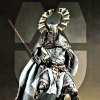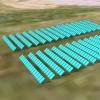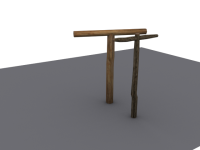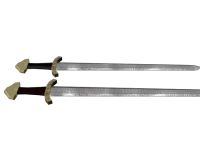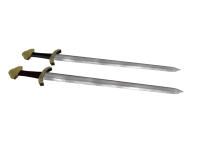Leaderboard
Popular Content
Showing content with the highest reputation on 2014-04-01 in all areas
-
With recent games such as Red Dead Redemption, Left 4 Dead 2, and The Last of Us being hugely successful, we have decided to change the overall direction of 0 A.D. so that it can appeal to a wider audience. We have many gameplay changes planned, such as removing the Roman faction and replacing it with an AI controlled horde of zombies. This transformation will probably take a few weeks to complete. The name Apocalypse of the Dead works well with our current title 0 A.D. because it means we don’t have to purchase new domain names. The ‘0’ therefore signifies the start of the apocalypse. Note: All comments in this topic may be moderated.3 points
-
Will do ^^ So it's a temple... Gosh. I wished it was something more open, I want to make a forger animation...2 points
-
2 points
-
No, it can be zipped, and it can be loose files. Either way will work fine. It's probably easiest to use loose files though as you can easier go through the folders and find the files you want etc. (Though if you are serious about modding I definitely encourage you to start using SVN rather than an alpha release: http://trac.wildfiregames.com/wiki/TortoiseSVN_Guide ) I would recommend that you create a folder of your own in the mods folder though, and just create the same folder structure as in the public mod folder for the files you want to overwrite or place similar. I.e. if you want to create a CIVNAME.json file for a new civilization of yours you create a folder at binaries\data\mods\YOURMODNAME\civs. If you want to create a new house model for a new civ of yours you create the folders: YOURMODNAME\simulation\templates\structures and place the entity XML there, YOURMODNAME\art\actors\structures\YOURNEWCIVNAME and place the art XML file in there, the DAE file in YOURMODNAME\art\meshes\structural and the texture in YOURMODNAME\art\textures\skins\structural That way you don't have to worry about your art interfering with the old art, but you can use the existing civs when testing things out.2 points
-
Here I post my tutorial about template modding and unit creation. Enjoy! I hope you learn a lot of it! If you still have some questions, feel free to ask. edit: the resulting files can be found here: http://www.wildfiregames.com/forum/index.php?app=core&module=attach§ion=attach&attach_id=7532 edit2: From now on, the tutorial can be found in the wiki: http://trac.wildfiregames.com/wiki/CreatingNewUnits This wiki page contains additional info (compared to the pdf document) with regards to setting up your mod, to work with the Mod Selector found in 0 A.D. Tutorial Unit creationv1.pdf1 point
-
I have been trying to mod, now i have some units and some buildings. I have unzipped the public folder and i have pasted the mod, later i have eliminated the original civs .json, having only my own civ .json file. The main problem is that the game crashes, giving an error, but i can't copy it cause the pc gets frozen (the pc makes an awful BIOS sound and i have to shut down all. Also there's not an error log... so, I know that this is hard without more info, but what I can do? ....editing units and civs by office writter it's very slow... I hope that a civ/unit editor will be made eventually..1 point
-
Hi As all of you know I'm really interested in this kind of buildings wether it should be Used as a standard Building or as an eyecandy, for small villages, which will have the great animations now that skeletons are fixed with their folks. Anyway I wasn't able to find much information on the buildings references itself except finding big ovens, and that the first appears to have been created in Lydia A few centuries AD. As you may have seen I made one (Two If you count the variations.) I used the reference for the Siedlers in which game I leaked the model a few weeks to later to compair boths. Can someone help me to find references ? Regards Stan.1 point
-
Hello, After reading a while on this forums I though I should register myself. I'am playing 0 A.D. for a year (or more, don't really know it). I wanted to contribute to the project, so I helped a bit on the dutch translation. Maybe one day (if I have a lot of time) I could contribute a bit of C++... I live in Antwerp (Belgium), I study computer science, and I'm a musician. Mathias1 point
-
All the art assets in SVN are available licensed under CC-BY-CA 3.0.1 point
-
Whoa, whoa, whoa, lets not even go there. There is no way we are going to dump our open-source pyrogenesis engine with 10+ years of development behind it for an expensive proprietary system.1 point
-
1 point
-
Most of it, mine as well is released under CC-BY-SA So you have to give credit, and the source, but are even able to sell it.1 point
-
1 point
-
1 point
-
1 point
-
Prop attachment point? Hmm. Do you mean how to position the origin? http://trac.wildfiregames.com/wiki/ArtDesignDocument#Tutorial:Propingwithpyrogenesis3dsmaxplugin Brilliant work Stan!! The first for the s.For For the helmets we have already some choices around in our giant Viking thread. Though you showed some variants I didn't see before. Interesting.1 point
-
1 point
-
1 point
-
Mint is more difficult to find, as single word, I add keywords like: currency, coin,coinage: Coinage probably began in Lydia around 600 BC, and circulated in the cities of Asia Minor under its control;[3] early electrum coins have been found at the Temple of Diana at Ephesus. The technique of minting coins arrived in mainland Greece around 550 BC, beginning with coastal trading cities like Aegina and Athens. Their use spread, and the city-states quickly secured a monopoly on their creation. The very first coins were made from electrum (an alloy of gold and silver), followed by pure silver, the most commonly found valuable metal in the region. The mines of the Pangaeon hills allowed the cities of Thrace and Macedon to mint a large quantity of coins. Laurium's silver mines provided the raw materials for the "Athenian owls", the most famous coins of the ancient Greek world. Less-valuable bronze coins appeared at the end of the 5th century. Coins played several roles in the Greek world. They provided a medium of exchange, mostly used by city-states to hire mercenaries and compensate citizens. They were a source of revenue: foreigners had to change their money into the local currency at an exchange rate favorable to the State. They served as a mobile form of metal resources, which explains discoveries of Athenian coins with high levels of silver at great distances from their home city. Finally, the minting of coins lent an air of undeniable prestige to any Greek city or city state. ------------other source-------- In 600 B.C., Lydia's King Alyattes minted the first official currency. The coins were made from electrum, a mixture of silver and gold that occurs naturally, and stamped with pictures that acted as denominations. In the streets of Sardis, circa 600 B.C., a clay jar might cost you two owls and a snake. Lydia's currency helped the country increase both its internal and external trade, making it one of the richest empires in Asia Minor. It is interesting that when someone says, "as rich as Croesus", they are referring to the last Lydian king who minted the first gold coin. Unfortunately, minting the first coins and developing a strong trading economy couldn't protect Lydia from the swords of the Persian army. (To read more about gold, see What Is Wrong With Gold?) http://www.investopedia.com/articles/07/roots_of_money.asp ------- different source------ Coins were introduced as a method of payment around the 6th or 5th century BCE. The invention of coins is still shrouded in mystery: According to Herdotous (I, 94), coins were first minted by the Lydians, while Aristotle claims that the first coins were minted by Demodike of Kyrme, the wife of King Midas of Phrygia. Numismatists consider that the first coins were minted on the Greek island of Aegina, either by the local rulers or by king Pheidon of Argos. Aegina, Samos, and Miletus all minted coins for the Egyptians, through the Greek trading post of Naucratis in the Nile Delta. It is certain that when Lydia was conquered by the Persians in 546 BCE, coins were introduced to Persia. The Phoenicians did not mint any coins until the middle of the fifth century BCE, which quickly spread to the Carthaginians who minted coins in Sicily. The Romans only started minting coins from 326 BCE. Coins were brought to India through the Achaemenid Empire, as well as the successor kingdoms of Alexander the Great. Especially the Indo-Greek kingdoms minted (often bilingual) coins in the 2nd century BCE. The most beautiful coins of the classical age are said to have been minted by Samudragupta (335-376 CE), who portrayed himself as both conqueror and musician. The first coins were made of electrum, an alloy of silver and gold. It appears that many early Lydian coins were minted by merchants as tokens to be used in trade transactions. The Lydian state also minted coins, most of the coins mentioning king Alyattes of Lydia. Some Lydian coins have a so-called legend, a sort of dedication. One famous example found in Caria reads "I am the badge of Phanes" - it is still unclear who Phanes was. In China, gold coins were first standardized during the Qin dynasty (221-207 BCE). After the fall of the Qin dynasty, the Han emperors added two other legal tenders: silver coins and "deerskin notes", a predecessor of paper currency which was a Chinese invention. http://www.ancient.eu.com/coinage/ ---------------------------------------------------------------------------- Gold and silver were an integral part of business and trade as far back as in the early civilisations of Sumer (the land between the rivers Euphrates and Tigris in what is now Iraq) and Egypt. The great French historian Fernand Braudel saw these precious metals as the "lifeblood of Mediterranean trade in the 2nd millennium BC". Initially, however, they were traded simply by weight in the form of ingots, which could then be cut up into small chunks or drawn into wire. And the metals, particularly silver, were regarded more as standard of accounting or for taxes to rulers or temples, rather than for general circulation among the population. The first real coins were not struck until the 6th century BC in Lydia (Western Turkey). They were made from electrum, natural alloy of gold and silver found in the rivers of the region. They usually had a lion or a bull on one face and a punch mark or seal on the other, and weighed from 17.2 grams (0.55 troy oz) to as little as 0.2 grams (.006 troy oz). Their introduction is attributed to the Lydian king Croesus (561-547 BC). Improvements in refining soon led to the distinct minting of gold and silver coin. Coinage was swiftly taken up in the blossoming Greek city states just across the Aegean sea, though it was predominantly of silver until Philip II of Macedon (359-336 BC) acquired gold and silver mines in Thrace (now Bulgaria). His son, Alexander the Great (336-323 BC) then consolidated the Greek empire with his conquest of the Persian empire, securing an immense gold treasure built up by the Persians from gold sources on the river Oxus in northern Afghanistan. Alexander is reputed to have taken over 22 metric tonnes (700,000 troy ounces) of gold coin in loot from the Persians. For both Philip II and Alexander, gold coin became an essential way of paying their armies and meeting other military expenses. Under the Greek empire, the coins were stamped with the head of the king instead of lions, bulls and rams that had previously adorned gold coin elsewhere. The Romans, for whom gold coin became the crucial way of paying their legions, also adopted the custom of striking the emperor's head on their gold aureus coin. The aureus was usually 950 fine (22 carat) and weighed 7.3 grams (0.23 troy oz); 45 aurei weighed one roman pound (libra). Although this coin was too valuable for most daily transactions, they were used by administrators, traders and for army pay (a legionnaire was paid one aureus each month). In Britain, one aureus bought 400 litres (28.57 gallons) of cheap wine or 91 kilos (200 pounds) of flour. A smaller gold coin, the solidus, weighing 4.4 grams (0.14 troy oz) was introduced after 300 AD, as gold supplies from Spain and Eastern Europe declined. The Romans minted gold coin on a scale not seen before and not equalled until modern times. Between 200 and 400 AD hundreds of millions of coins were struck and distributed throughout the empire. The extent of circulation is demonstrated by the hoards of roman coins that have turned up across Europe, particularly in Britain, which can be seen in many museums, notably the British Museum in London. The British Museum's HSBC Money Gallery provides a unique display of the evolution of early gold coin. The Roman empire brought a remarkable unity to much of western Europe through coherent public institutions and coinage. When that empire fell apart soon after 400 AD, it was almost one thousand years before widespread gold coinage returned. The solidus survived as the main gold coin of the Mediterranean world, being minted by the Byzantine emperors in Constantinople as the nomisma or bezant. The bezant personified gold coinage from the fall of the Roman empire until the rise of Venice with its famous gold and silver ducats. "It is admired by all men and in all kingdoms, because no kingdom has a currency that can be compared to it," noted a 6th century observer. But due to a shortage of new gold supplies, minting was very limited and the coins were increasingly debased. By 1081 the gold content was only 250 fine (six carats). The Emperor Comenus restored some credibility in 1092 with a new coin of 4.4 grams (0.14 troy oz) called the hyperpyron, which many still nicknamed bezant and the Venetians called perpero. The coin never attained much prestige, however, as gold supplies were still limited. http://info.goldavenue.com/info_site/in_glos/in_glos_coinshistory.htm1 point
-
1 point
-
1 point


.thumb.png.0d87fc71cb8a644c5d862ceabac1e0d5.png)
